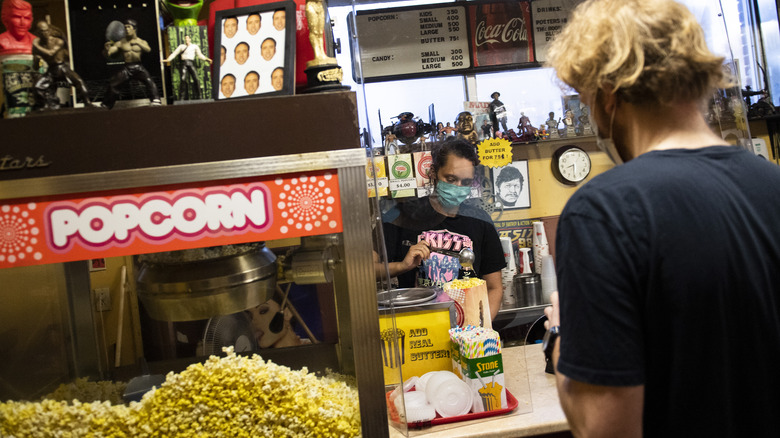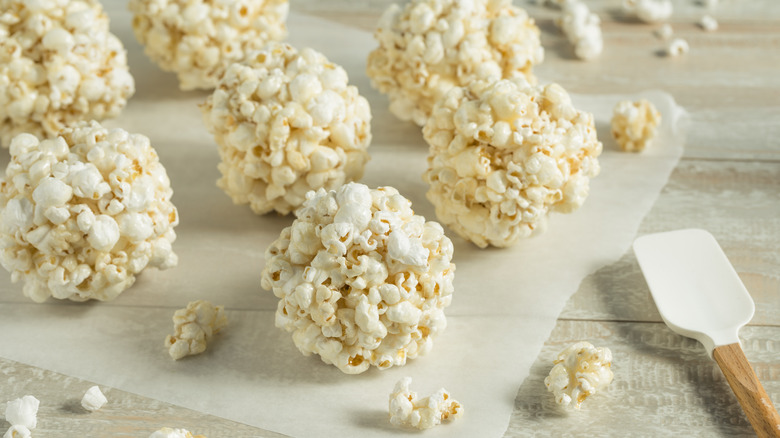Achieve Movie Theater-Quality Popcorn With One Secret Ingredient
Americans have been snacking on popcorn since the 1800s, according to Britannica — it was affordable and simple to prepare and didn't need much input to make it delicious. With the invention of the steam-powered popcorn maker in 1885, popcorn took to the streets and won our hearts. It doesn't even need to be fresh or hot to be loveable: things like Costco rainbow unicorn popcorn exist. But it was the Great Depression that turned people toward accessible indulgences, like escaping into films and dining on cheap popcorn, explains Britannica.
Even in a world of innovations in food and technology, popcorn remains as familiar and no-frills as ever. But why? Does movie theater popcorn smell and taste so good it simply overwhelms the senses, adding to the cinema experience? Does its comforting presence butter up the more difficult scenes? Or, does its delicious aroma naturally complement the smell of wall-to-wall carpet and Milk Duds? It turns out that there's a very specific reason popcorn tastes better at the movies, and it's all due to a very special ingredient.
Movie theaters use Flavacol on their popcorn
The magic behind probably every golden, crunchy morsel of movie theater popcorn comes in an orange box — packaging that has not changed much in decades. The same holds true for the product within. Popcorn Supply Company names Gold Medal's Flavacol as "the world's most popular seasoning salt." Gold Medal itself says that Original Flavacol is not comprised of salt crystals but flakes — which means less sodium, more taste, and maximum kernel coating. It's a short ingredient list, just salt, artificial flavor, and a little food dye.
As a butter-flavored salt, Flavacol doubles down on that familiar flavor without turning your popcorn into a soggy mess — not what you want when you're watching a movie sitting on someone else's chair. While you're on the hunt for Flavacol or awaiting its arrival in the mail, sprinkle on the creativity. Bacon salt and maple sugar add a sweet and smoky dimension, while the Tajin in Martha Stewart's elote-style popcorn brings a little citrusy heat. Nutritional yeast flakes are nutty and cheesy yet vegan — try them in The New York Times's recipe.
Making homemade popcorn is easy
You don't need special equipment to make popcorn at home, despite what dedicated devices like popcorn makers and poppers indicate. All you need is a large pot with a lid — this is essential – popping kernels are projectiles! your oil and seasonings of choice, and of course your popcorn. The Pioneer Woman reminds us to use a pot that will heat quickly and opt for a high-temperature oil like canola. Flavacol's makers suggest coconut oil on its Facebook page but you can also use avocado oil or even ghee.
Put three tablespoons of oil in the pan over high heat until it shimmers but doesn't smoke. Then add one layer of kernels to the pan. As they pop, shake the pan gently and occasionally and remove it from the heat once the popping has slowed. If you wind up with leftover popcorn (it happens), you can always turn it into a new and equally delicious snack like popcorn balls and party mix. With popcorn, the fun never stops — it's a blast to make, eat, and share, whether it's at the big screen or on the couch.


